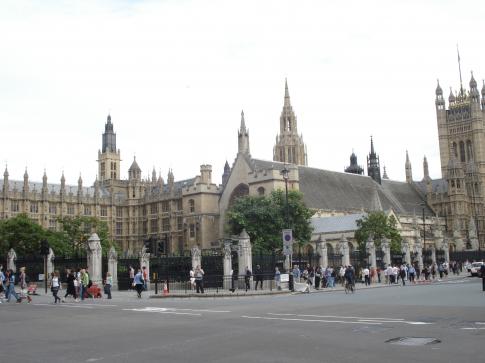Traces of terror

Spectroscopy relies on the fact that atoms and molecules absorb and emit light at characteristic wavelengths. Its applications range from studying chemical reactions in laboratories to analysing the composition of stars.
DETECTING explosives from a distance is difficult. But a device developed by Optix, a consortium of European companies led by Indra, a Spanish technology consultancy, may have cracked the problem. Optix’s detector uses two types of spectroscopy in parallel, to seek out trace amounts of chemicals that may have come from explosives. That means it does not rely on being able to see the bomb itself but can instead pick up, at a range of as much as 20 metres, residues left on exposed surfaces by those who have handled a bomb.
Spectroscopy relies on the fact that atoms and molecules absorb and emit light at characteristic wavelengths. Its applications range from studying chemical reactions in laboratories to analysing the composition of stars. Optix’s system works by shining a laser at the object to be analysed, and looking at what comes back.
First, the laser shines a high-energy beam. This is used for a technique called laser-induced breakdown spectroscopy (LIBS). The beam turns residues, such as might be left around a car-door handle, into a plasma. A telescope focused on the target collects light emitted by this plasma and passes it to a spectroscope. There it is analysed, to discover which chemical elements the plasma is made from.
Knowing these elements, though, is only half the story. What matters is how they are combined into chemical compounds in the residue. To find this out the machine uses a second process, Raman spectroscopy. This time the laser fires a low-powered beam. Instead of disintegrating the residue’s molecules, this beam makes them vibrate. Such vibrations vary characteristically from compound to compound, and combining the results of Raman examination with those of LIBS provides a reliable analysis of what the residue contains.
Since the system’s laser can shine through glass, it is not restricted to looking at the outsides of things. This means, according to Javier Hernández, Optix’s project manager at Indra, that it can routinely analyse such things as traces left on the steering wheel of a suspicious car. In one test it was even able to penetrate an apparently opaque plastic bottle, and the light reflected back was sufficient to detect explosives inside.
At the moment, Optix has only a prototype and is working on increasing the system’s sensitivity and precision. This prototype is the size of a large refrigerator, so when it is eventually deployed it will be mounted on a self-propelled wheeled platform, rather like a bomb disposal robot. In the future, though, smaller versions may emerge. Soldiers would certainly welcome a hand-held version to detect roadside bombs./Economist.com




 del.icio.us
del.icio.us Digg
Digg

Post your comment